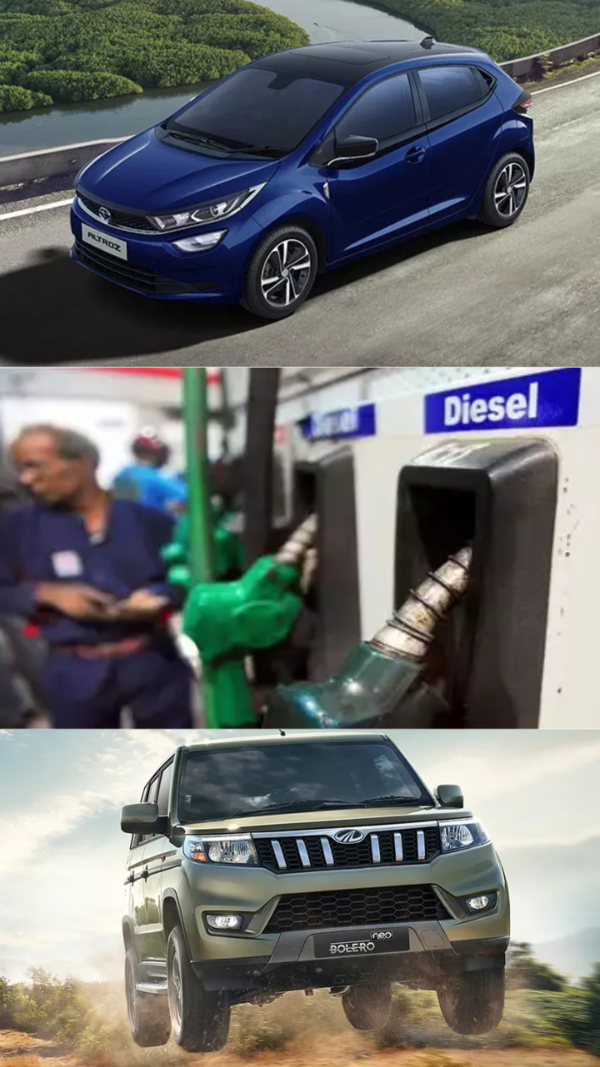Trending
Beyond charge and discharge: Hidden threat of battery waste to marine life
Sachin Sharma, Founder and Director of GEM Enviro Management, highlights the crucial role of batteries in sustainable energy solutions, emphasizing their impact on marine ecosystems.

Beyond charge and discharge: Hidden threat of battery waste to marine life
This article is authored by Sachin Sharma, Founder and Director, GEM Enviro Management.
In the quest for sustainable energy solutions, batteries have emerged as indispensable components of our modern lives. From powering electric vehicles to storing renewable energy, batteries play a crucial role in reducing carbon emissions and mitigating climate change.However, amidst the push for green technologies, the dark side of battery usage often goes unnoticed – the detrimental impact of battery waste on marine ecosystems.
According to estimates by the Central Pollution Control Board (CPCB), India discards approximately 70,000 metric tons of lithium batteries annually, with this figure expected to rise significantly. Compounding this issue is the lack of adequate disposal infrastructure, with nearly 80% of used batteries and e-waste improperly disposed of, often ending up in household refuse or littering the environment. This improper disposal poses significant environmental and health hazards, especially to our oceans and marine life, highlighting the pressing need for improved battery recycling and disposal mechanisms.
Batteries contain a cocktail of toxic chemicals, including lead, mercury, cadmium, and lithium, which can leach into the environment when batteries are discarded in landfills or improperly recycled. Once released, these contaminants can contaminate waterways, poison aquatic organisms, and disrupt fragile marine ecosystems.
One of the most pressing concerns associated with battery waste is the contamination of marine habitats. When batteries break down in landfills or littered environments, toxic chemicals seep into the soil and groundwater, eventually finding their way into rivers, lakes, and oceans. These pollutants can accumulate in sediments and bioaccumulate in aquatic organisms, leading to a range of adverse effects, from developmental abnormalities to reproductive disorders.
Moreover, the improper disposal of batteries poses a direct threat to marine life. Marine animals, such as fish, seabirds, and marine mammals, are particularly vulnerable to ingesting or becoming entangled in battery debris. The ingestion of battery fragments or toxic chemicals can cause internal injuries, organ damage, and even death. Furthermore, the presence of heavy metals in marine ecosystems can disrupt physiological processes and weaken immune responses, making organisms more susceptible to diseases and other environmental stressors.
The consequences of battery waste extend beyond individual organisms to entire ecosystems. Coral reefs, mangroves, and seagrass beds – vital habitats that support diverse marine life – are at risk of degradation and destruction due to pollution from battery waste. As these ecosystems decline, the ripple effects can be felt throughout the marine food web, jeopardizing the livelihoods of coastal communities that depend on healthy oceans for sustenance and economic prosperity.
Mitigating the threat of battery waste requires a collective response from the government and collaboration with industry leaders to establish a nationwide network of designated battery collection points. Public awareness campaigns by the CPCB and NGOs can educate consumers about responsible battery management practices through radio advertisements, community outreach programs, and social media initiatives. Additionally, policymakers must enact stringent regulations and enforcement mechanisms to ensure the proper handling, recycling, and disposal of batteries, minimizing the risk of environmental contamination.
Furthermore, innovation in battery technology and recycling processes is essential to reduce the environmental footprint of batteries throughout their lifecycle. Research into alternative materials and sustainable manufacturing practices can help mitigate the environmental impact of battery production and disposal, paving the way for a more sustainable energy future.
Implementing effective Extended Producer Responsibility (EPR) schemes, akin to those in Europe and other developed regions, can hold manufacturers accountable for collection and recycling efforts. This approach would incentivize the design of more recyclable batteries and spur investments in recycling infrastructure within the industry. By transitioning toward a more circular economy model for batteries, India can pave the way for a sustainable future for its oceans and the diverse life forms they sustain. The issue of battery waste demands immediate action, and through robust regulations, infrastructure development, and consumer awareness initiatives, India can chart a course toward a healthier future for its marine ecosystems.
Disclaimer: Views and opinions expressed in this article are solely those of the original author and do not represent any of The Times Group or its employees.
In the quest for sustainable energy solutions, batteries have emerged as indispensable components of our modern lives. From powering electric vehicles to storing renewable energy, batteries play a crucial role in reducing carbon emissions and mitigating climate change.However, amidst the push for green technologies, the dark side of battery usage often goes unnoticed – the detrimental impact of battery waste on marine ecosystems.
According to estimates by the Central Pollution Control Board (CPCB), India discards approximately 70,000 metric tons of lithium batteries annually, with this figure expected to rise significantly. Compounding this issue is the lack of adequate disposal infrastructure, with nearly 80% of used batteries and e-waste improperly disposed of, often ending up in household refuse or littering the environment. This improper disposal poses significant environmental and health hazards, especially to our oceans and marine life, highlighting the pressing need for improved battery recycling and disposal mechanisms.
Batteries contain a cocktail of toxic chemicals, including lead, mercury, cadmium, and lithium, which can leach into the environment when batteries are discarded in landfills or improperly recycled. Once released, these contaminants can contaminate waterways, poison aquatic organisms, and disrupt fragile marine ecosystems.
A report published by the United Nations Environment Programme (UNEP) sheds light on the alarming scale of the problem. According to the report, an estimated 50 million metric tons of electronic waste, including batteries, are generated globally each year, with only a fraction being properly recycled or disposed of. The indiscriminate dumping of battery waste poses a grave threat to marine biodiversity and the health of our oceans.
One of the most pressing concerns associated with battery waste is the contamination of marine habitats. When batteries break down in landfills or littered environments, toxic chemicals seep into the soil and groundwater, eventually finding their way into rivers, lakes, and oceans. These pollutants can accumulate in sediments and bioaccumulate in aquatic organisms, leading to a range of adverse effects, from developmental abnormalities to reproductive disorders.
Moreover, the improper disposal of batteries poses a direct threat to marine life. Marine animals, such as fish, seabirds, and marine mammals, are particularly vulnerable to ingesting or becoming entangled in battery debris. The ingestion of battery fragments or toxic chemicals can cause internal injuries, organ damage, and even death. Furthermore, the presence of heavy metals in marine ecosystems can disrupt physiological processes and weaken immune responses, making organisms more susceptible to diseases and other environmental stressors.
Dylect car vaccuum cleaner review: In-built tyre inflator too| TOI Auto
The consequences of battery waste extend beyond individual organisms to entire ecosystems. Coral reefs, mangroves, and seagrass beds – vital habitats that support diverse marine life – are at risk of degradation and destruction due to pollution from battery waste. As these ecosystems decline, the ripple effects can be felt throughout the marine food web, jeopardizing the livelihoods of coastal communities that depend on healthy oceans for sustenance and economic prosperity.
Mitigating the threat of battery waste requires a collective response from the government and collaboration with industry leaders to establish a nationwide network of designated battery collection points. Public awareness campaigns by the CPCB and NGOs can educate consumers about responsible battery management practices through radio advertisements, community outreach programs, and social media initiatives. Additionally, policymakers must enact stringent regulations and enforcement mechanisms to ensure the proper handling, recycling, and disposal of batteries, minimizing the risk of environmental contamination.
Furthermore, innovation in battery technology and recycling processes is essential to reduce the environmental footprint of batteries throughout their lifecycle. Research into alternative materials and sustainable manufacturing practices can help mitigate the environmental impact of battery production and disposal, paving the way for a more sustainable energy future.
Implementing effective Extended Producer Responsibility (EPR) schemes, akin to those in Europe and other developed regions, can hold manufacturers accountable for collection and recycling efforts. This approach would incentivize the design of more recyclable batteries and spur investments in recycling infrastructure within the industry. By transitioning toward a more circular economy model for batteries, India can pave the way for a sustainable future for its oceans and the diverse life forms they sustain. The issue of battery waste demands immediate action, and through robust regulations, infrastructure development, and consumer awareness initiatives, India can chart a course toward a healthier future for its marine ecosystems.
Disclaimer: Views and opinions expressed in this article are solely those of the original author and do not represent any of The Times Group or its employees.
End of Article
FOLLOW US ON SOCIAL MEDIA









